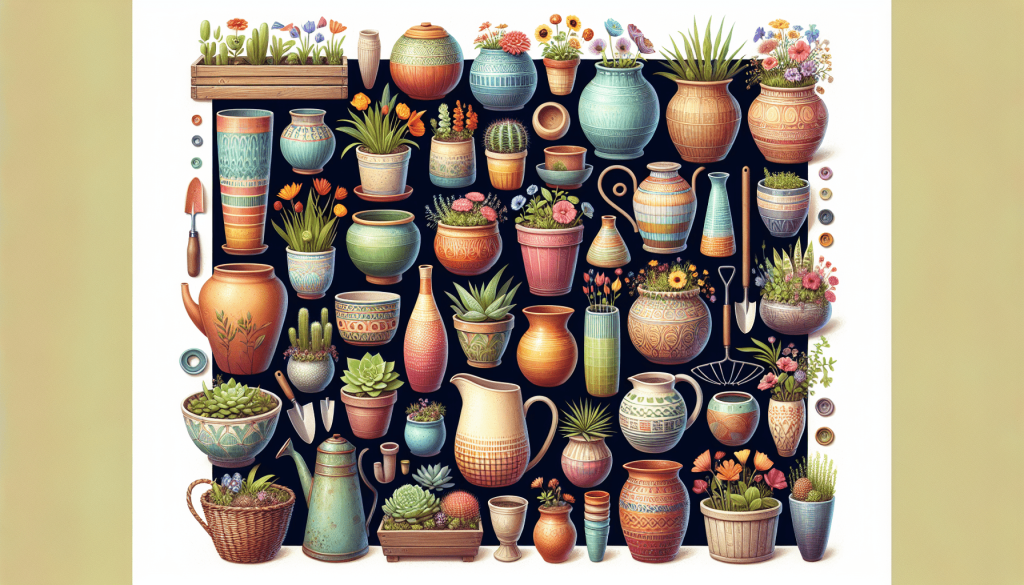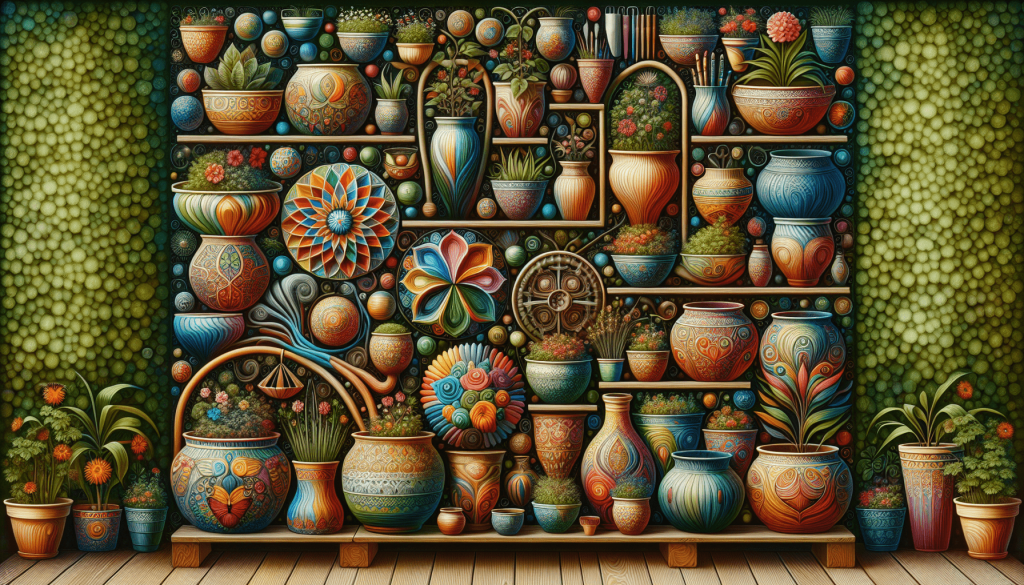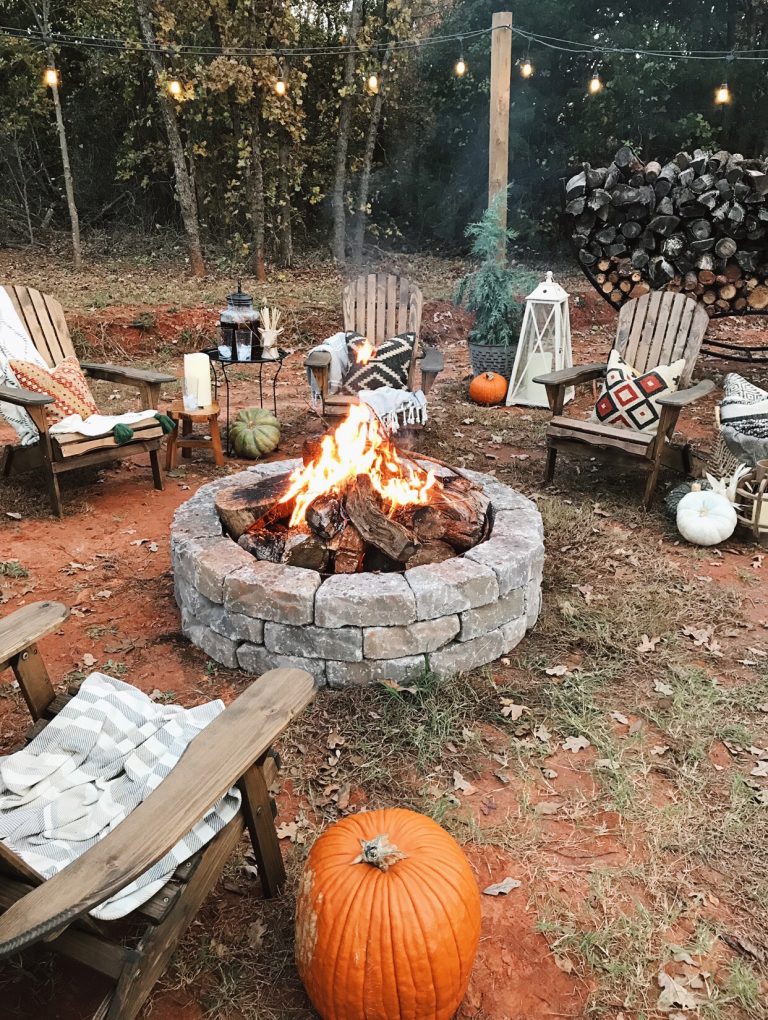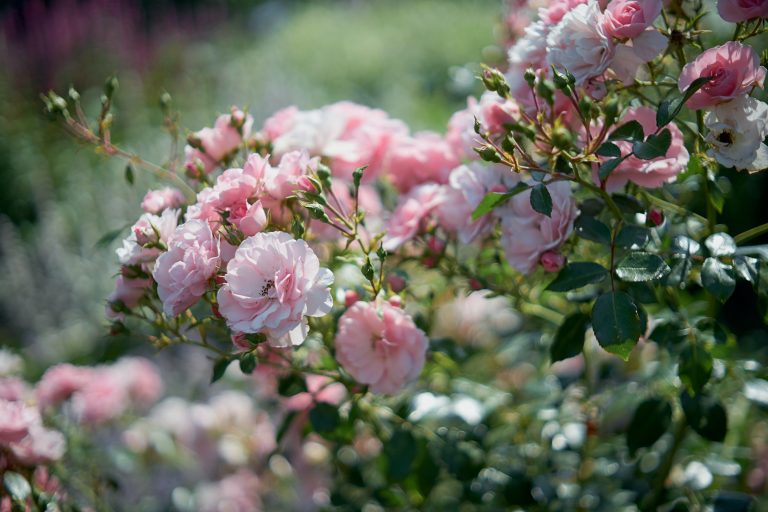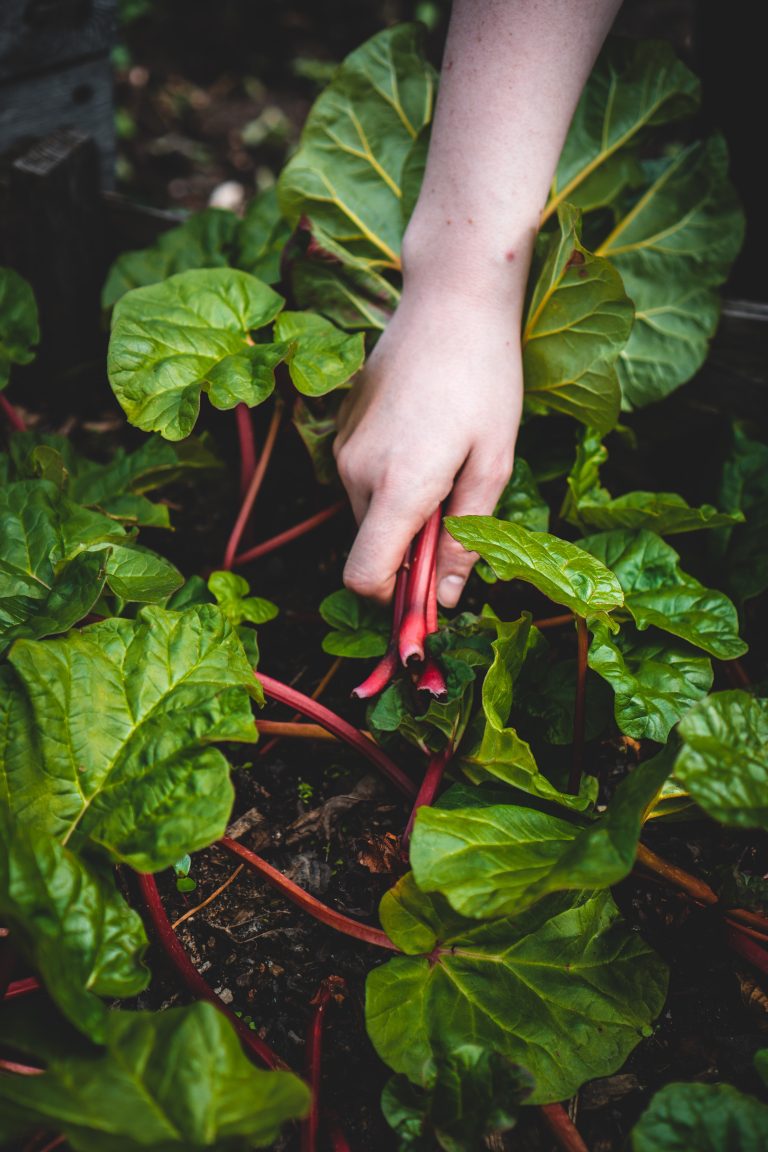Are you looking to add some greenery to your outdoor space but unsure of which garden containers and pots to choose? Choosing the right type of garden containers and pots is essential for the health and growth of your plants. In this article, we will guide you through the factors you should consider when selecting the perfect containers for your garden. From material and size to drainage and aesthetics, we will help you make an informed decision that will result in a beautiful and flourishing garden. So, let’s get started on creating the ideal home for your plants!
Table of Contents
ToggleConsider the Material
When choosing garden containers and pots, the material is an important factor to consider. Here are some common materials to choose from:
Terracotta
Terracotta pots are a popular choice among gardeners for their natural and rustic look. They are made from clay and have a porous surface that allows for good airflow and drainage. However, they can be prone to cracking in freezing temperatures and may require extra care to prevent moisture loss.
Plastic
Plastic pots are lightweight, durable, and affordable. They come in a variety of colors and sizes, making them versatile for any garden style. Plastic pots also have good moisture retention, making them suitable for plants that require more frequent watering. However, they may not have the same aesthetic appeal as other materials.
Wood
Wooden pots add a touch of elegance to any garden setting. They are available in various types of wood, such as cedar, teak, and redwood, which are naturally resistant to rot and decay. However, wooden pots may require regular maintenance, such as sealing or staining, to prolong their lifespan.
Metal
Metal containers, such as zinc or aluminum, offer a modern and sleek look for your garden. They are durable, weather-resistant, and provide good insulation for plant roots. However, metal pots may heat up quickly in direct sunlight, which can affect the temperature of the soil.
Fiberglass
Fiberglass pots are lightweight, durable, and offer excellent weather resistance. They come in various shapes, sizes, and finishes, allowing for creative and unique garden designs. Fiberglass pots also have good insulation properties, keeping the soil temperature stable for healthy plant growth. However, they tend to be more expensive compared to other materials.
Evaluate the Drainage
Proper drainage is crucial for the health and well-being of your plants. Here are some factors to consider when evaluating the drainage of garden containers and pots:
Look for drainage holes
Ensure that the containers have drainage holes at the bottom to allow excess water to escape. Without proper drainage, the soil can become waterlogged, leading to root rot and other plant diseases.
Check for water retention
Some materials, like terracotta and clay, have better drainage properties compared to plastic or metal pots. Consider the watering needs of your plants and choose a container that provides adequate drainage without retaining too much water.
Consider self-watering features
If you lead a busy lifestyle or often forget to water your plants, consider pots with self-watering features. These containers have a reservoir or saucer at the bottom that holds water, allowing the plants to draw moisture as needed. Self-watering pots can help maintain a consistent level of moisture, preventing overwatering or underwatering.
Size and Shape
Choosing the right size and shape of garden containers and pots is essential for the healthy growth of your plants. Consider the following factors:
Consider the size of the plant
Ensure that the container is large enough to accommodate the plant’s size at maturity. Overcrowding can hinder root growth and development, leading to stunted growth or nutrient deficiencies. Take into account the height, spread, and root system of the plant when selecting the container size.
Check root depth requirements
Different plants have varying root depths, so it’s important to choose a pot that can accommodate their needs. Deep-rooted plants, such as tomatoes or sunflowers, require deeper pots, while shallow-rooted plants, such as herbs or succulents, can thrive in shallower containers.
Choose appropriate shape for plant growth
Consider the growth habit of the plant when selecting the pot shape. Plants with a spreading or trailing habit, like ivy or petunias, may benefit from wider and shallower containers. Conversely, plants with an upright or compact habit, like roses or lavender, may require taller and narrower pots to support their growth.
Consider space limitations
If you have limited space, consider vertical gardening or hanging baskets to maximize your gardening area. These containers allow you to grow plants upward, saving valuable space while still enjoying a bountiful garden. Hanging baskets also add a charming touch to balconies or patios.
Consider Durability
When investing in garden containers and pots, it’s important to consider their durability. Here are some factors to evaluate:
Evaluate weather resistance
Consider the prevailing weather conditions in your area and choose containers that can withstand them. Materials like plastic, fiberglass, or metal are generally more weather-resistant, while terracotta or wood may be more prone to damage from extreme temperatures or moisture.
Consider long-lasting materials
Investing in durable and long-lasting materials can save you money in the long run. Plastic, fiberglass, or metal pots are known for their longevity and can withstand years of use. Wooden pots, if properly maintained, can also last for a considerable amount of time.
Evaluate Weight
The weight of garden containers and pots is an important consideration, especially if you plan to move or rearrange your plants frequently. Here’s why it matters:
Consider mobility and portability
If you have a balcony or rooftop garden, lightweight containers are ideal as they are easier to move around. Plastic, fiberglass, or lightweight metal pots are great options for those who like to rearrange their garden frequently or have limited strength.
Choose lightweight options for balconies or rooftops
Balconies and rooftops often have weight restrictions due to structural limitations. Ensure that the containers you choose are lightweight and won’t exceed the maximum load-bearing capacity of your space.
Aesthetics and Design
Garden containers and pots can be more than just functional; they can also enhance the beauty and aesthetics of your garden. Consider the following factors:
Consider the overall garden theme
Think about the style or theme of your garden and choose containers that complement it. For a modern garden, sleek and minimalist pots in neutral colors will fit well. Traditional gardens may benefit from classic terracotta or wooden pots. Let your personal style shine through in your container choices to create a cohesive and visually pleasing garden.
Choose containers that complement the plants
Consider the colors and textures of the plants you intend to grow and choose pots that enhance their beauty. Vibrant flowers may pop against a neutral background, while foliage plants may benefit from a complementary color scheme. Experiment with different combinations to create a visually appealing composition.
Evaluate color and texture options
Container gardening is an opportunity to add visual interest and texture to your garden. Choose pots with interesting textures, like ridges or patterns, to create depth and dimension. Experiment with different color combinations to create focal points or add a pop of color to your garden.
Cost
The cost of garden containers and pots can vary greatly depending on the material, size, and design. Consider the following factors when determining your budget:
Set a budget
Before purchasing any garden containers, it’s important to set a budget to avoid overspending. Determine how much you are willing to invest and prioritize the containers that best meet your needs within that budget.
Compare prices
Research prices at different garden centers or online retailers to get an idea of the average cost of containers. Keep in mind that higher-quality materials or unique designs may come at a higher cost. Compare prices and consider factors such as durability, aesthetics, and functionality before making a decision.
Consider long-term investment
While budget constraints are important, it’s also essential to consider the long-term investment of garden containers. Quality materials may cost more initially but can last for several years, making them a worthwhile investment. Balance your budget with the longevity and quality of the containers to make an informed decision.
Assess Maintenance Requirements
Garden containers and pots require regular maintenance to ensure the health of your plants. Consider the following factors when assessing maintenance requirements:
Consider cleaning and sterilization
Regularly clean and sterilize your containers to prevent the buildup of bacteria or disease-causing organisms. Plastic, fiberglass, or metal pots can be easily cleaned with a mild detergent and water, while terracotta or wooden pots may require more specialized cleaning methods.
Evaluate insulation properties
Some materials, like fiberglass or metal, provide better insulation for plant roots, protecting them from extreme temperature fluctuations. This insulation helps maintain a more stable soil temperature, promoting healthy plant growth. Consider the insulation properties of the containers, especially if you live in regions with extreme climates.
Check for UV resistance
If your garden containers will be exposed to direct sunlight, consider UV-resistant materials. Prolonged exposure to the sun’s UV rays can cause fading, discoloration, or degradation of certain materials. Look for containers specifically labeled as UV-resistant, especially if you live in sunnier regions.
Evaluate Eco-Friendliness
In today’s world, making environmentally conscious choices is essential. Consider the following factors when evaluating the eco-friendliness of garden containers:
Consider recyclable materials
Opt for containers made from recyclable materials, such as plastic or fiberglass, to reduce waste. Recycling these containers at the end of their lifecycle ensures they can be repurposed into new products, minimizing their impact on the environment.
Choose sustainable options
Consider containers made from sustainable materials, such as bamboo or reclaimed wood. These materials have a lower environmental impact and promote responsible resource management. Additionally, look for containers that are manufactured using eco-friendly practices, such as using renewable energy or reducing water consumption during the production process.
Consider Plant-specific Needs
Different plants have varying soil and moisture requirements. Consider the following factors when choosing pots for specific plants:
Research plant’s soil and moisture requirements
Take the time to research the specific needs of the plants you intend to grow, including their preferred soil type and watering frequency. Some plants, like succulents or cacti, require well-draining soil and infrequent watering, while others, like ferns or tropical plants, prefer moisture-retaining soil and regular watering.
Choose pots that suit plant’s needs
Select pots or containers that are suitable for the plant’s specific soil and moisture requirements. For plants that prefer well-draining soil, consider pots with drainage holes at the bottom to prevent waterlogging. Plants with moisture-loving characteristics may benefit from self-watering containers or pots with water reservoirs.
Consider aeration for specific plants
Certain plants, like orchids or air plants, require good aeration around their roots. Choose containers that promote airflow, such as pots with slits or mesh sides. This aeration allows the roots to breathe and prevents the risk of root rot.
Choosing the right garden containers and pots is crucial for the health and success of your plants. Consider factors such as material, drainage, size, durability, weight, aesthetics, cost, maintenance requirements, eco-friendliness, and plant-specific needs when making your selection. With careful consideration, you can create a beautiful and thriving garden that brings you joy for years to come.

